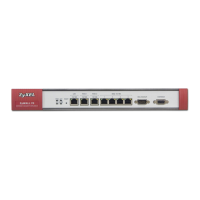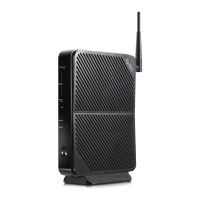ZyWALL 5/35/70 Series User’s Guide
519
CHAPTER 28
UPnP Screens
28.1 Overview
This chapter introduces the Universal Plug and Play feature. This chapter is only applicable
when the ZyWALL is in router mode.
Universal Plug and Play (UPnP) is a distributed, open networking standard that uses TCP/IP
for simple peer-to-peer network connectivity between devices. A UPnP device can
dynamically join a network, obtain an IP address, convey its capabilities and learn about other
devices on the network. In turn, a device can leave a network smoothly and automatically
when it is no longer in use.
28.1.1 What You Can Do in the UPnP Screens
• Use the UPnP screen (Section 28.3 on page 526) to configure the ZyWALL’s UPnP
settings.
• Use the UPnP Ports screen (Section 28.4 on page 527) to view the NAT port mapping
rules that UPnP creates on the ZyWALL.
28.1.2 What You Need To Know About UPnP
How Do I Know If I'm Using UPnP?
UPnP hardware is identified as an icon in the Network Connections folder (Windows XP).
Each UPnP compatible device installed on your network will appear as a separate icon.
Selecting the icon of a UPnP device will allow you to access the information and properties of
that device.
NAT Traversal
UPnP NAT traversal automates the process of allowing an application to operate through
NAT. UPnP network devices can automatically configure network addressing, announce their
presence in the network to other UPnP devices and enable exchange of simple product and
service descriptions. NAT traversal allows the following:
• Dynamic port mapping
• Learning public IP addresses
• Assigning lease times to mappings
Windows Messenger is an example of an application that supports NAT traversal and UPnP.
See Chapter 22 on page 436 for further information about NAT.

